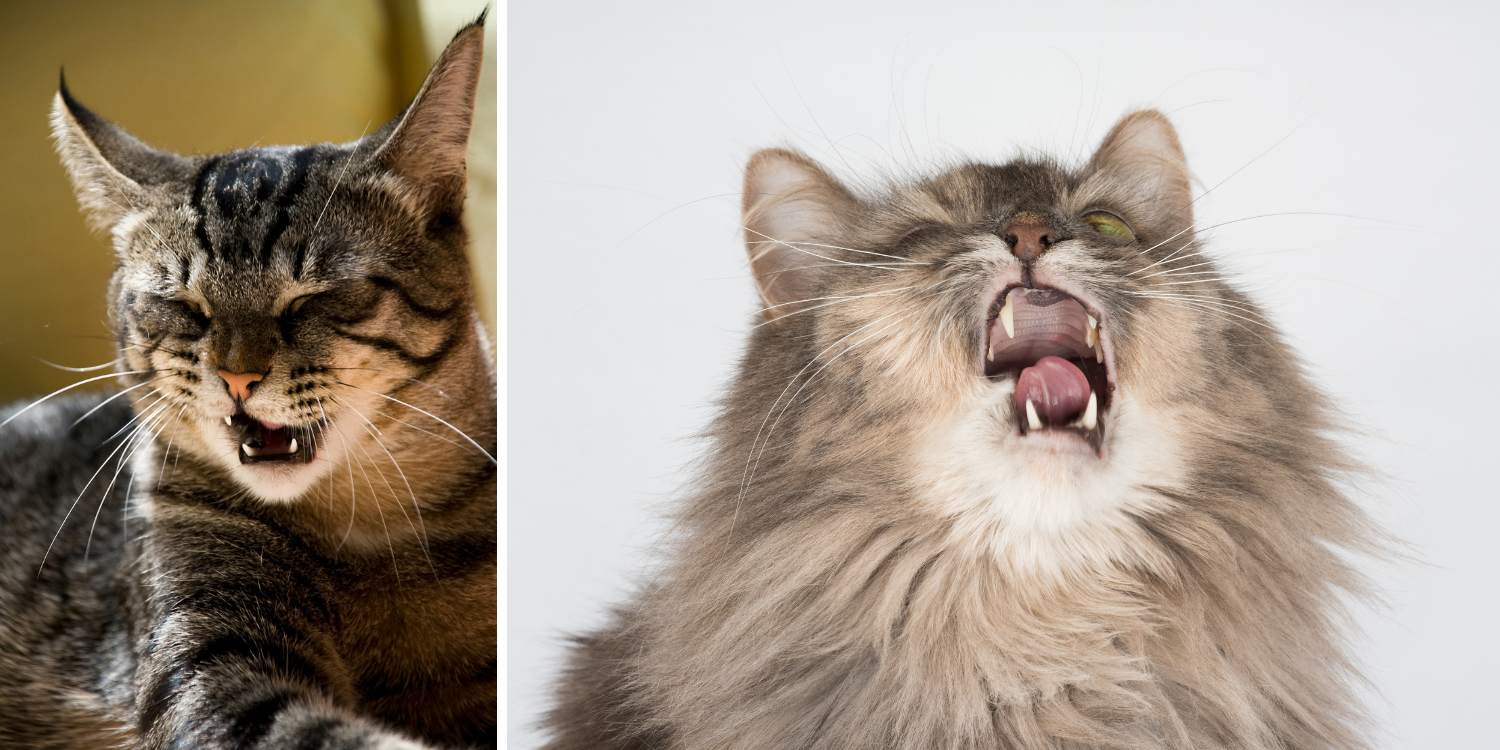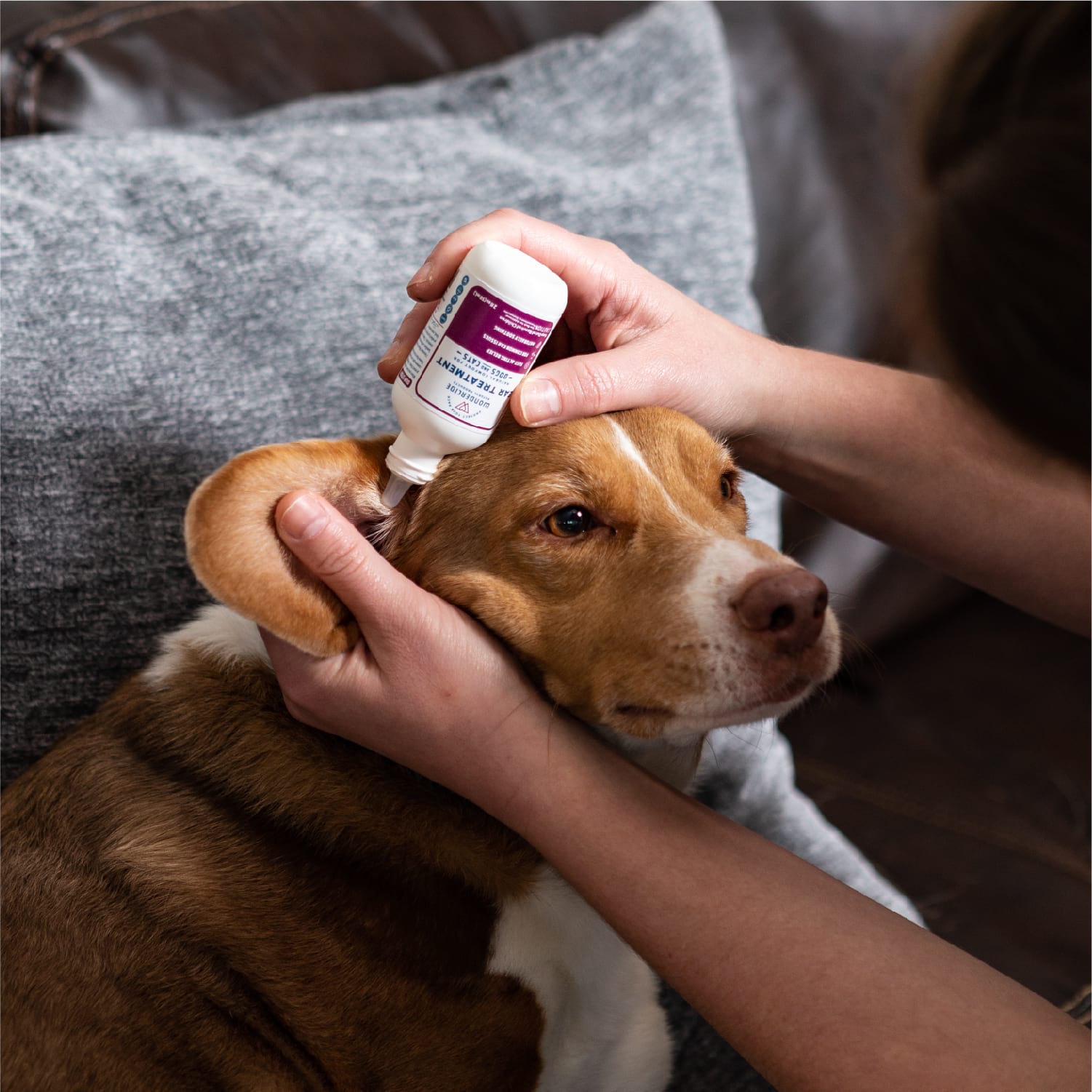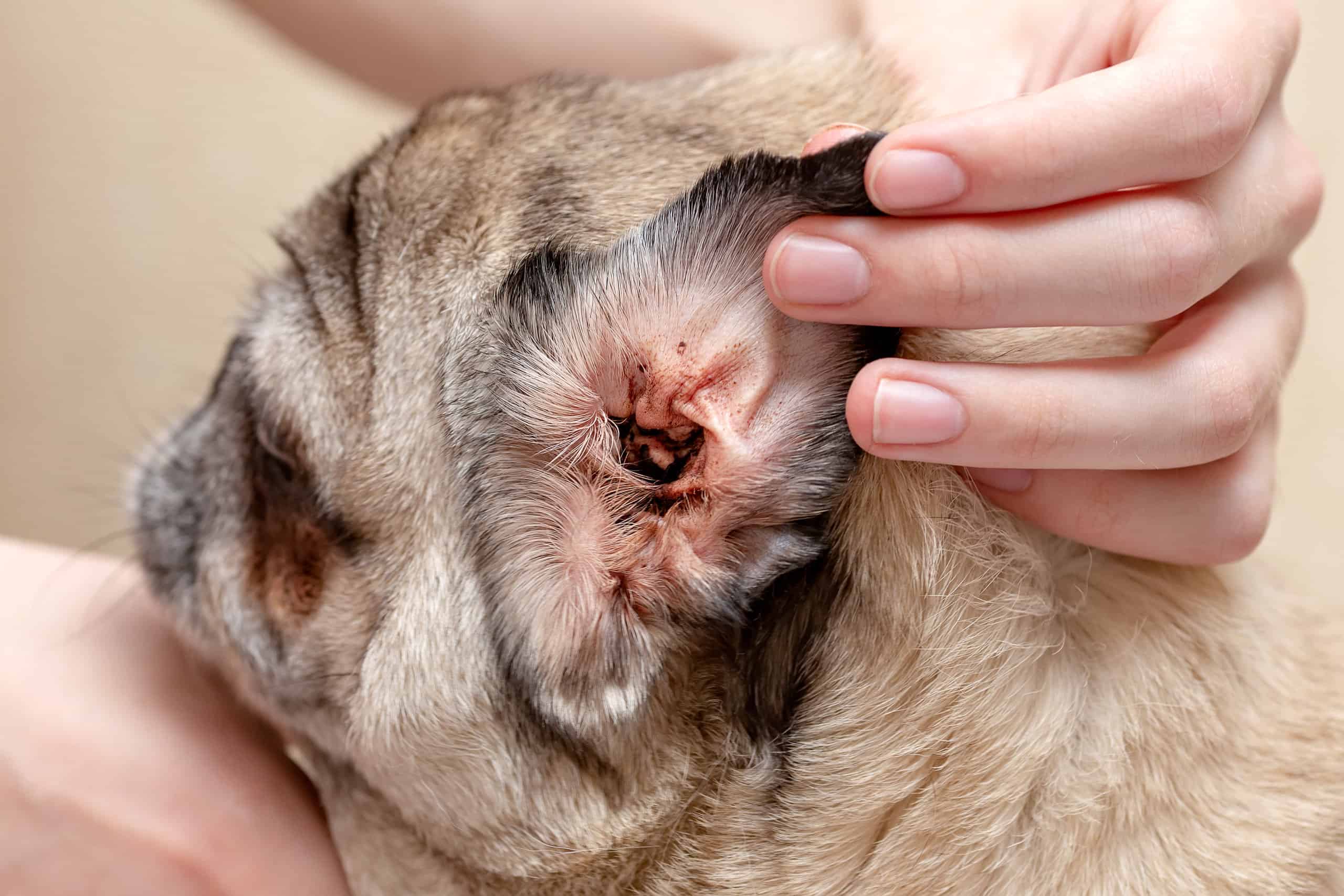Key Takeaways:
- Regularly examining your cat's head is important for their overall health and well-being.
- Checking your cat's ears for any signs of infection or ear mites is crucial.
- Inspecting your cat's eyes can help detect any redness, discharge, or signs of injury.
- Examining your cat's nose for any abnormal discharge or sneezing can indicate respiratory issues.
- Checking your cat's mouth and teeth can help identify dental problems or signs of gum disease.
Introduction:
Are you a cat owner who wants to ensure the well-being of your furry friend? If so, understanding how to examine your cat's head is essential for their overall health. By learning this valuable skill, you can detect early signs of illness or injury and provide prompt care. In fact, studies show that regular check-ups can help prevent serious health issues in cats. So, if you want to be a responsible and proactive pet owner, keep reading to discover the simple steps to examine your cat's head and give them the care they deserve.
Importance of Checking Your Cat's Head for Health Issues
Checking your cat's head regularly is important to ensure their overall health and well-being. The head is a crucial part of a cat's body, containing vital organs such as the eyes, ears, and mouth. By examining your cat's head regularly, you can detect any potential health issues early on and seek appropriate veterinary care.
Regular head checks can help identify common problems like ear infections, dental issues, or eye infections. These conditions, if left untreated, can cause discomfort and pain for your cat. By catching them early, you can prevent them from progressing into more serious problems that may require more extensive treatment.
Why should you check your cat's head?
Checking your cat's head allows you to:
- Detect and treat potential health issues early on
- Ensure your cat's comfort and well-being
- Maintain good oral hygiene
- Prevent the spread of infections
The benefits of regular head checks:
Regularly checking your cat's head can lead to:
- Early detection of ear infections or mites
- Prompt treatment for dental problems like tooth decay or gum disease
- Timely identification of eye infections or abnormalities
- Avoidance of unnecessary pain and discomfort for your feline friend
Signs of Potential Problems with Your Cat's Head
To identify potential health issues with your cat's head, it is essential to be aware of certain signs that may indicate a problem. Keep an eye out for these signs during your regular head checks:
If you notice any of the following symptoms, it may indicate a problem with your cat's head:
- Excessive scratching or shaking of the head
- Redness, swelling, or discharge in the ears
- Cloudiness, redness, or discharge in the eyes
- Bad breath or difficulty eating
- Visible tartar buildup on teeth or inflamed gums
Common signs of potential problems:
Some common signs that may indicate a problem with your cat's head include:
- Frequent ear scratching or head shaking can be a sign of ear mites or infections.
- Redness, swelling, or discharge in the ears may suggest an ear infection.
- Cloudiness, redness, excessive tearing, or discharge from the eyes could indicate an eye infection or injury.
- If your cat has bad breath or difficulty eating, it might be a sign of dental issues like tooth decay or gum disease.
- Tartar buildup on teeth and inflamed gums can also signal dental problems.
Gentle Examination Techniques for Your Cat's Ears
Examining your cat's ears is an essential part of checking their head for any potential health issues. Here are some gentle examination techniques you can use to inspect your cat's ears:
Gently examining your cat's ears:
- Start by creating a calm environment: Sit with your cat in a quiet room where they feel comfortable and secure. This will help them relax during the examination.
- Observe the external appearance of the ears: Look for any redness, swelling, or discharge on the outer part of the ear. These may indicate an infection or mites.
- Gently lift your cat's ear flap: Hold the base of your cat's ear and gently lift the flap to expose the inner ear. Be cautious not to apply too much pressure or cause discomfort to your cat.
- Inspect the ear canal: Use a flashlight to look inside your cat's ear canal. Look for any signs of redness, inflammation, excessive wax buildup, or dark discharge. If you notice anything unusual, it is best to consult your veterinarian for further evaluation.
Tips for a successful ear examination:
- Be patient and gentle with your cat throughout the process
- If your cat becomes stressed or anxious, take a break and try again later
- Avoid inserting any objects into your cat's ears as it can cause injury
- If you are unsure about anything you observe during the examination, seek professional veterinary advice
Please note that I have provided information only up to this point.
What to Look for When Inspecting Your Cat's Eyes
Signs of Eye Problems
When inspecting your cat's eyes, there are several signs you should look out for that may indicate eye problems. These include redness or inflammation, excessive tearing or discharge, cloudiness or opacity in the eyes, squinting or blinking more than usual, and changes in the size or shape of the pupils. If you notice any of these signs, it is important to consult with a veterinarian as they could be indicative of an underlying health issue.
Checking Eye Color and Clarity
To ensure your cat's eyes are healthy, it is essential to check their eye color and clarity. A normal eye color for cats is typically green, yellow, or amber. However, some cats may have blue eyes due to genetics. It is crucial to observe any changes in eye color as it could be a sign of illness. Additionally, examine the clarity of your cat's eyes by looking for any haziness or cloudiness. Clear and bright eyes are usually a good indication of overall feline health.
Assessing Pupil Response
Another aspect to consider when inspecting your cat's eyes is their pupil response. The pupils should normally constrict (become smaller) when exposed to bright light and dilate (become larger) in dim lighting conditions. Use a flashlight or natural light source to test your cat's pupil response by shining the light into their eyes from different angles. If you notice any abnormal reactions such as unequal pupil sizes or lack of response to light changes, it could indicate an underlying issue that requires veterinary attention.
Conclusion:
Regularly inspecting your cat's eyes can help detect potential health problems early on and ensure their overall well-being. By being vigilant about signs of eye problems, checking eye color and clarity, and assessing pupil response, you can take proactive steps in maintaining your cat's ocular health.
Maintaining Oral Health: Examining Your Cat's Mouth and Teeth
Checking for Dental Issues
Examining your cat's mouth and teeth is crucial for maintaining their oral health. Look out for signs of dental issues such as bad breath, swollen or bleeding gums, tartar buildup on the teeth, loose or missing teeth, and difficulty eating or chewing. These symptoms may indicate dental diseases like gingivitis or periodontal disease. If you notice any of these signs, it is essential to consult with a veterinarian who can provide appropriate treatment.
Inspecting Teeth and Gums
To examine your cat's teeth and gums, gently lift their lips to expose the mouth. Check for any discoloration or spots on the teeth, as well as any redness or inflammation in the gums. Healthy teeth should be clean and white without any visible decay or damage. The gums should appear pink and firm. If you notice any abnormalities such as broken teeth, excessive tartar buildup, or inflamed gums, it is advisable to seek professional dental care for your feline companion.
Promoting Dental Hygiene
Maintaining good oral hygiene is vital for your cat's overall health. Regular brushing of their teeth using a pet toothbrush and toothpaste specifically designed for cats can help prevent dental issues. Additionally, providing chew toys or dental treats that promote chewing can assist in keeping their teeth clean. However, it is important to note that professional dental cleanings performed by a veterinarian are necessary to remove stubborn tartar buildup and ensure optimal oral health.
Conclusion:
Regularly examining your cat's mouth and teeth allows you to identify potential dental problems early on. By checking for dental issues, inspecting teeth and gums, and promoting dental hygiene through brushing and appropriate chew toys, you can help maintain your cat's oral health and prevent more serious dental diseases.
Areas on Your Cat's Head to Pay Extra Attention to During a Health Check
Ears: Checking for Ear Infections
During a head check, it is important to pay extra attention to your cat's ears. Look out for signs of ear infections such as redness, swelling, discharge, or a foul odor coming from the ears. Additionally, observe if your cat is shaking their head excessively or scratching at their ears frequently. These symptoms may indicate an ear infection or ear mites. If you notice any of these signs, consult with a veterinarian who can provide appropriate treatment.
Nose: Assessing Nasal Discharge
Another area to focus on during a head check is your cat's nose. Check for any abnormal nasal discharge such as excessive mucus or pus-like fluid. Healthy cats typically have clear nasal passages without any discharge. If you notice persistent or colored nasal discharge, it could be a sign of an upper respiratory infection or other underlying health issues. Seeking veterinary advice is recommended in such cases.
Mouth: Examining the Lips and Whisker Pads
Examining your cat's mouth during a head check involves paying attention to the lips and whisker pads. Look for any sores, cuts, or swelling on the lips that may indicate injury or infection. Additionally, ensure that the whisker pads are intact and not damaged. Whiskers play an essential role in a cat's sensory perception, so any abnormalities in this area should be addressed by a veterinarian.
Conclusion:
When conducting a head check on your cat, giving special attention to their ears, nose, and mouth can help identify potential health issues. By checking for ear infections, assessing nasal discharge, and examining the lips and whisker pads, you can ensure your cat's overall well-being and promptly address any concerns.
Steps to Take if You Notice Abnormalities or Concerns During a Head Check
Contacting a Veterinarian
If you notice any abnormalities or concerns during a head check on your cat, it is crucial to contact a veterinarian. They have the expertise to assess the situation accurately and provide appropriate guidance or treatment. Delaying veterinary care may worsen the condition or lead to complications, so prompt action is essential.
Documenting Symptoms
Before contacting a veterinarian, it is helpful to document the symptoms or abnormalities you observed during the head check. Note down details such as when you first noticed the issue, any changes in behavior or appetite, and any other relevant information. This documentation will assist your veterinarian in making an accurate diagnosis and determining the most suitable course of action.
Following Veterinary Advice
Once you have consulted with a veterinarian regarding the abnormalities or concerns identified during the head check, it is important to follow their advice diligently. This may involve scheduling an appointment for further examination, administering prescribed medications, or making necessary lifestyle adjustments for your cat's well-being. By adhering to their recommendations, you can ensure that your cat receives appropriate care and increases their chances of recovery.
Conclusion:
Noticing abnormalities or concerns during a head check requires immediate action by contacting a veterinarian. Documenting symptoms and following veterinary advice are crucial steps in ensuring proper diagnosis and treatment for your cat's health.
Preventing Potential Health Problems in Cats through Regular Head Checks
The Importance of Regular Head Checks
Regularly conducting head checks on your cat is an essential part of preventive healthcare. By examining their eyes, mouth, ears, nose, and other areas on the head, you can identify potential health problems early on. Early detection allows for timely intervention and treatment, which can prevent more serious health issues from developing.
Establishing a Routine
To ensure regular head checks become a habit, it is beneficial to establish a routine. Choose a specific time and location where you can comfortably examine your cat's head without distractions. By making it a consistent part of your cat's grooming or playtime routine, you are more likely to remember and prioritize these important health checks.
Building Trust and Positive Reinforcement
Some cats may be resistant to having their heads examined initially. Building trust through positive reinforcement techniques can help make the process easier over time. Gradually introduce your cat to the concept by offering treats or rewards during and after each head check. This positive association will help them feel more comfortable and cooperative during future examinations.
Conclusion:
Regular head checks play a crucial role in preventing potential health problems in cats. By establishing a routine, building trust through positive reinforcement, and being proactive in identifying any abnormalities or concerns, you can contribute to your cat's overall well-being and ensure they lead a healthy life.
In conclusion, regularly checking your cat's head is an important part of keeping them healthy. By looking for signs of abnormalities or discomfort, you can catch any potential issues early and ensure your furry friend stays happy and well.
How to do an oral exam on a cat?
One way to gently examine a cat's teeth is by using one hand to expose the upper teeth and the other hand to expose the lower teeth. The first step is to place one hand on top of the cat's head and use the thumb to lift the lip upwards and towards the back, allowing a view of the premolars and molars.
How do vets examine cats?
What does the veterinarian look for during a physical exam? During a physical exam, the veterinarian will observe the overall appearance of your cat, listen to their chest using a stethoscope, and feel specific areas of their body.
What to expect for a cat wellness exam?
During a cat's routine check-up, the vet will examine the cat's eyes, ears, teeth, lymph nodes in the neck, heart, lungs, and abdomen. They will also assess the cat's skin, coat, joints, and behavior for any signs of abnormalities or illness.
What does a healthy cat mouth look like?
When it comes to your cat's gums, it's important for them to be a healthy shade of pink, pale, or bright. If your cat has red gums, it could be a sign of an issue. Additionally, if your cat is drooling or pawing at their mouth, it's a cause for concern. Another indicator of a dental problem is the presence of brown streaks and tartar buildup on their teeth.
How long does it take to examine a cat?
The appointment with your veterinarian can take anywhere from 15 to 30 minutes, during which they will thoroughly examine your cat's body for any signs of disease or abnormalities.
How long does a cat examination take?
Cat wellness exams usually last for approximately 30 minutes. This allows the veterinarian enough time to answer your queries, conduct a thorough examination of your cat, and collect any required samples or perform diagnostic tests. It also provides an opportunity for treatments if necessary.
















